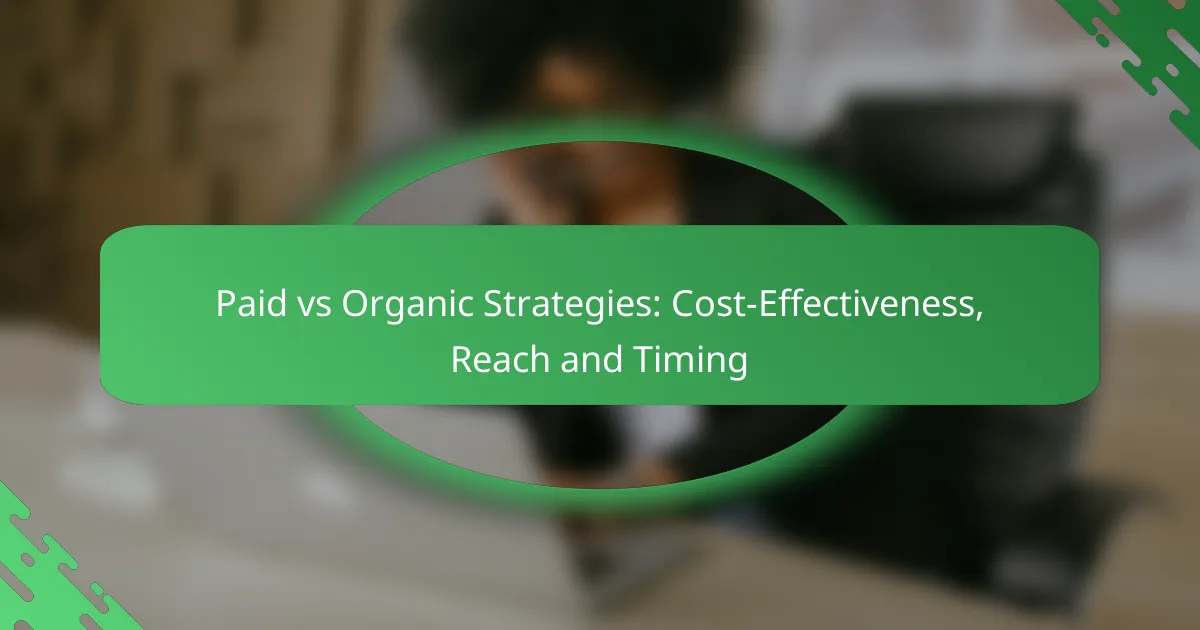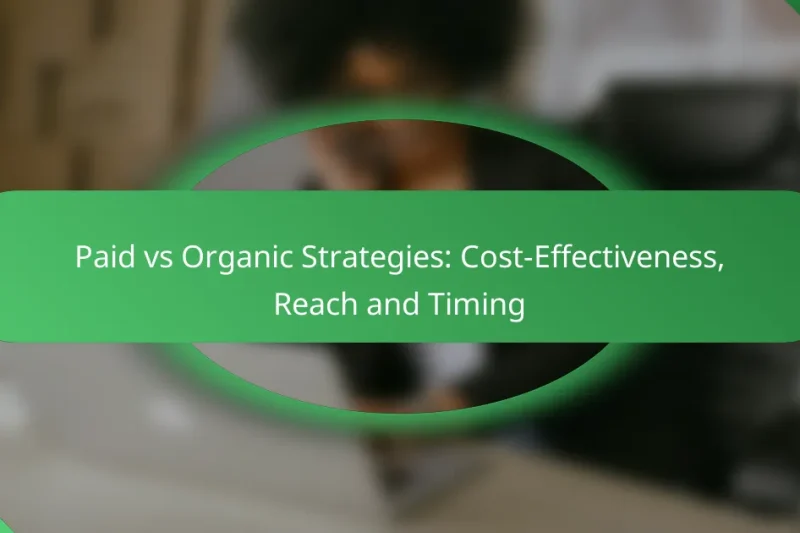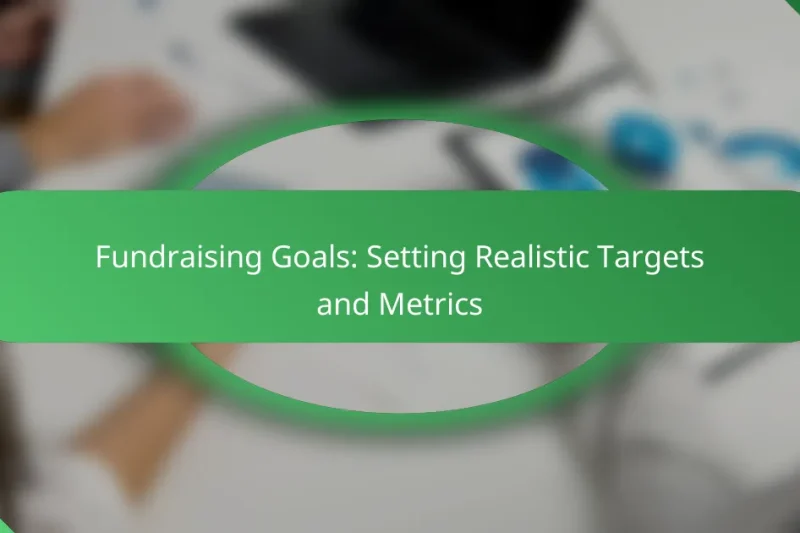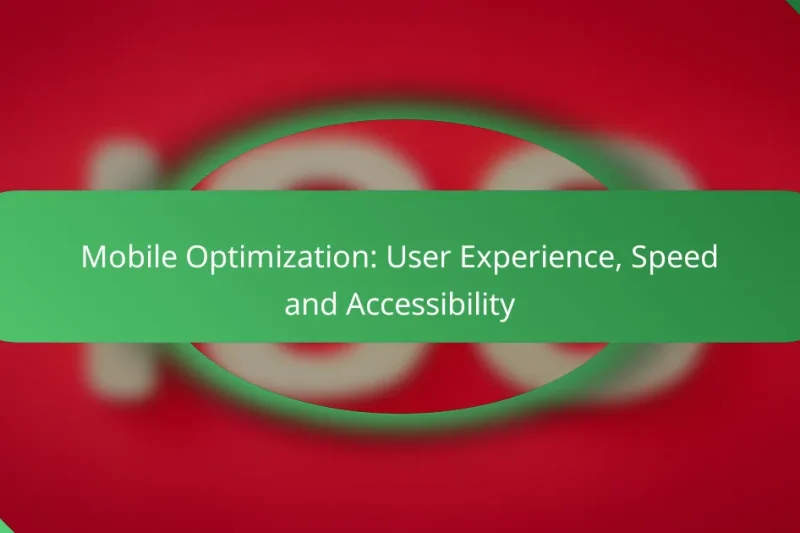Campaign ads can greatly benefit from A/B testing, a method that compares two ad versions to … Campaign Ads: A/B Testing, Effectiveness Evaluation and Audience InsightsRead more
Political campaign strategies in the US are essential for engaging voters and driving turnout. By combining digital outreach, grassroots efforts, and targeted messaging, campaigns aim to maximize their influence among specific demographics. Utilizing data analytics and social media, candidates can tailor their communications and connect with voters in real-time, enhancing their overall effectiveness.
Campaign Performance Metrics: Key Indicators, Swing State Analysis and Data Tracking
Campaign performance metrics are crucial for assessing the effectiveness of political strategies and identifying areas for … Campaign Performance Metrics: Key Indicators, Swing State Analysis and Data TrackingRead more
Paid vs Organic Strategies: Cost-Effectiveness, Reach and Timing
In the competitive landscape of digital marketing, businesses must weigh the cost-effectiveness, reach, and timing of … Paid vs Organic Strategies: Cost-Effectiveness, Reach and TimingRead more
Fundraising Goals: Setting Realistic Targets and Metrics
Setting realistic fundraising goals is essential for any organization aiming to maximize its impact. By understanding … Fundraising Goals: Setting Realistic Targets and MetricsRead more
Debate Styles: Aggressive vs. Collaborative Approaches: Which Is Better and When to Use
Debate styles play a crucial role in shaping discussions, with aggressive and collaborative approaches each offering … Debate Styles: Aggressive vs. Collaborative Approaches: Which Is Better and When to UseRead more
Mobile Optimization: User Experience, Speed and Accessibility
Mobile optimization is essential for enhancing user experience, speed, and accessibility on smartphones and tablets. By … Mobile Optimization: User Experience, Speed and AccessibilityRead more
Influencer Partnerships: Reach, Credibility and Engagement
Influencer partnerships have become a powerful tool for brands seeking to enhance their reach and credibility … Influencer Partnerships: Reach, Credibility and EngagementRead more
Campaign Messages: Effectiveness, Engagement and Millennial Appeal
Crafting effective campaign messages for millennials requires a deep understanding of their values and communication styles, … Campaign Messages: Effectiveness, Engagement and Millennial AppealRead more
Fundraising Events: Planning, Execution and Community Involvement
Planning and executing a successful fundraising event requires careful attention to detail, from setting clear objectives … Fundraising Events: Planning, Execution and Community InvolvementRead more
Political Debates: Preparation Strategies, Opponent Analysis and Confidence Building
Preparing for political debates requires a multifaceted approach that includes comprehensive research, strategic planning, and confidence-building … Political Debates: Preparation Strategies, Opponent Analysis and Confidence BuildingRead more
What are effective political campaign strategies in the US?
Effective political campaign strategies in the US involve a mix of digital outreach, grassroots efforts, and targeted messaging to engage voters. These strategies are designed to maximize visibility and influence among specific demographics, ultimately driving voter turnout and support.
Digital advertising campaigns
Digital advertising campaigns leverage online platforms to reach potential voters through targeted ads. These campaigns can include display ads, video content, and social media promotions, allowing candidates to tailor their messages based on user data and preferences.
Consider allocating a significant portion of your budget to digital ads, as they can yield high engagement rates. A well-structured campaign might involve A/B testing different messages to see what resonates best with your audience.
Grassroots mobilization
Grassroots mobilization focuses on building a strong base of support through community engagement and volunteer efforts. This strategy often involves door-to-door canvassing, phone banking, and organizing local events to connect with voters on a personal level.
To effectively mobilize grassroots support, recruit volunteers who are passionate about the campaign's message. Providing training and clear goals can enhance the effectiveness of these efforts, leading to increased voter turnout in local areas.
Targeted messaging
Targeted messaging involves crafting specific messages that resonate with different voter segments. By understanding the unique concerns and interests of various demographics, campaigns can tailor their communications to address those needs directly.
Utilize data analytics to identify key voter segments and develop messages that speak to their priorities. This approach can significantly improve the relevance of your campaign, making it more likely to convert undecided voters.
Voter outreach programs
Voter outreach programs aim to educate and inform potential voters about the election process and the importance of their participation. These programs can include informational workshops, community forums, and partnerships with local organizations to spread awareness.
Implementing outreach initiatives that focus on underrepresented communities can help increase voter registration and turnout. Providing resources in multiple languages and accessible formats can further enhance engagement.
Social media engagement
Social media engagement is crucial for modern political campaigns, allowing candidates to interact directly with voters and share their messages in real-time. Platforms like Facebook, Twitter, and Instagram can be used to create a dialogue and foster community around the campaign.
Develop a consistent posting schedule and engage with followers by responding to comments and messages. Utilizing live streams for Q&A sessions or town halls can also enhance transparency and build trust with the electorate.
How do political campaigns utilize data analytics?
Political campaigns leverage data analytics to enhance decision-making and optimize strategies. By analyzing voter behavior, demographics, and preferences, campaigns can tailor their messages and outreach efforts effectively.
Voter segmentation
Voter segmentation involves dividing the electorate into distinct groups based on shared characteristics such as age, income, education, and voting history. This allows campaigns to create targeted messages that resonate with specific demographics, increasing engagement and support.
For example, a campaign might focus on younger voters by utilizing social media platforms, while targeting older voters through traditional media. Effective segmentation can lead to higher conversion rates and more efficient use of resources.
Predictive modeling
Predictive modeling uses historical data and statistical algorithms to forecast future voter behavior. By analyzing past election results and current trends, campaigns can identify which voters are most likely to support them and tailor their outreach accordingly.
For instance, a campaign might predict that certain neighborhoods will have higher turnout rates based on previous elections, allowing them to allocate resources to those areas. This strategic approach helps maximize campaign impact and efficiency.
Performance tracking
Performance tracking involves monitoring the effectiveness of campaign strategies in real-time. By analyzing data from various channels, campaigns can assess which tactics are working and which need adjustment.
Common metrics include engagement rates, conversion rates, and voter turnout. Regularly reviewing these metrics enables campaigns to pivot quickly, ensuring they remain responsive to voter needs and preferences throughout the election cycle.
What role does social media play in political campaigns?
Social media is a crucial tool in political campaigns, enabling candidates to connect with voters, share their messages, and mobilize support. It allows for targeted communication and real-time feedback, making it an essential component of modern campaigning.
Brand building
Social media helps candidates establish and enhance their brand identity. Through consistent messaging, visuals, and engagement, candidates can create a recognizable persona that resonates with voters. This branding should reflect core values and key issues that matter to the electorate.
For effective brand building, campaigns should focus on creating high-quality content that aligns with their message. Regular updates and interactions can foster a sense of community and loyalty among supporters, increasing the likelihood of voter turnout.
Real-time engagement
Real-time engagement on social media allows candidates to respond quickly to current events and voter concerns. This immediacy helps maintain relevance and shows voters that the candidate is attentive and responsive. Engaging with followers through comments, live streams, and Q&A sessions can deepen connections.
To maximize real-time engagement, campaigns should monitor social media trends and conversations. Utilizing tools for tracking mentions and sentiment can help identify opportunities for timely responses and proactive communication.
Influencer partnerships
Partnering with influencers can amplify a candidate's reach and credibility. Influencers, especially those with strong connections to specific demographics, can help spread campaign messages to wider audiences. This strategy can be particularly effective among younger voters who may rely more on social media personalities than traditional media.
When selecting influencers, campaigns should consider alignment with their values and message. Authentic partnerships that feel genuine to the audience can enhance trust and engagement, while poorly chosen collaborations may backfire and alienate potential supporters.
What are the key components of a campaign budget?
A campaign budget typically includes various expenses that are essential for running an effective political campaign. Key components include advertising costs, staff salaries, and event expenses, each of which plays a crucial role in ensuring the campaign reaches its target audience and operates smoothly.
Advertising costs
Advertising costs are often one of the largest expenses in a campaign budget, encompassing both traditional and digital media. Candidates may allocate funds for television, radio, print ads, and online advertising, with costs varying significantly based on the medium and target audience.
For example, a 30-second television spot during prime time can cost thousands of dollars, while social media ads may range from a few dollars to several hundred, depending on reach and engagement. It's essential to analyze the effectiveness of each advertising channel to maximize return on investment.
Staff salaries
Staff salaries represent another major component of a campaign budget, covering the costs of hiring campaign managers, strategists, communications staff, and volunteers. Salaries can vary widely based on experience and location, with key positions often commanding higher wages.
For instance, campaign managers in larger cities may earn upwards of $70,000 annually, while entry-level positions might start at lower rates. It's crucial to balance hiring skilled personnel with budget constraints, ensuring that the team is efficient and effective.
Event expenses
Event expenses include costs associated with organizing rallies, fundraisers, and town hall meetings. These expenses can encompass venue rentals, catering, security, and promotional materials, all of which contribute to the overall campaign experience.
Planning events requires careful budgeting, as costs can quickly add up. For example, a small local fundraiser might cost a few hundred dollars, while a large rally could run into the thousands. Prioritizing events that maximize voter engagement and fundraising potential is key to effective budget management.
How to choose the right campaign strategy?
Choosing the right campaign strategy involves understanding your target audience, the political landscape, and the resources available. A well-defined strategy aligns your campaign's goals with effective messaging and outreach methods.
Identify your target audience
Understanding your target audience is crucial for tailoring your campaign strategy. Consider demographics such as age, income, education, and political affiliation. This information helps in crafting messages that resonate with specific voter groups.
Utilize surveys and focus groups to gather insights about voter preferences and concerns. This data can guide your messaging and outreach efforts, ensuring they are relevant and impactful.
Analyze the political landscape
Analyzing the political landscape involves assessing the strengths and weaknesses of opponents, as well as current political trends. Identify key issues that matter to voters in your area and how they align with your campaign's platform.
Stay informed about local, state, and national political developments. This knowledge allows you to adapt your strategy in response to changing circumstances and voter sentiments.
Evaluate your resources
Evaluating your resources includes assessing your budget, team, and time constraints. Determine how much funding is available for advertising, events, and outreach efforts. A clear budget helps prioritize spending on the most effective strategies.
Consider the skills and experience of your campaign team. Assign roles based on strengths to maximize efficiency. Time management is also essential; create a timeline that outlines key milestones and deadlines for your campaign activities.











